I’ll let you in on a secret. My favorite holiday is not on any national calendars. It doesn’t coincide with a school break. And only a few people I know celebrate it too.
It’s the Youth Media Awards ceremony, which takes place during the American Library Association’s Midwinter conference each year.
The leaders of ALA’s youth and teen divisions host a live webcast as they announce the year’s finalists and winners in Youth Media Award categories like the Printz, Morris, and YALSA Excellence in Nonfiction Awards. Like many other librarians, the announcement of the YMAs sends me into a frenzy–locating, reading, and purchasing these lauded titles for my students. I have been making my way through as many of them as possible over the past six weeks and have discovered some gems for my staff and students.
We Are Okay, by Nina LaCour (Printz Award winner)
The Michael L. Printz Award is given for excellence in literature written for young adults. It’s the big, all-encompassing award. I wanted to check out We Are Okay immediately because I think it came as a bit of surprise to many people.
The book follows the character Marin, as she prepares to spend her first winter break of her college career alone in her New York City dorm. Her grandfather, with whom she has always lived, has recently passed away, an event shrouded in sadness and a distinct sense of mystery. She is expecting her best friend, Mabel, to arrive to spend a few days, but the anticipation of this visit is also heavy with tension and complicated history.
The novel’s mood is soft, subtle, and often somber. Yet LaCour artfully builds suspense in her characters’ experiences, creating a novel about those parts of ourselves we share openly–and those that we keep hidden.
The Hate U Give, by Angie Thomas (Morris Award Winner, Coretta Scott King Author Finalist, Printz Finalist, and Odyssey Award Winner)
One of the books that received copious buzz in the YA book world this year, The Hate U Give follows 16-year-old Starr as she tries to find a balance between her modest home life, in a neighborhood full of other African American people from similar backgrounds, and her fancy suburban prep school, where she is always a racial minority and frequently subject to racist and tokenizing prejudices.
When Starr sees her childhood best friend, Khalil, shot by a police officer under the auspices of public safety, she finds herself in an entirely new internal battle. Does she remain quiet, knowing that what she witnessed was a horrible crime deserving of punishment? Or does she speak out publicly, putting herself in the spotlight for scrutiny and the always-disappointing public opinion?
No one in the book universe was surprised to see this title on so many lists. It’s a gripping, gritty statement about police brutality that our young people need to read.
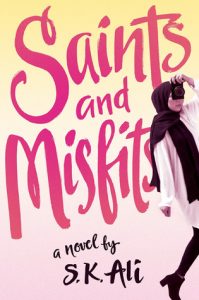 Saints and Misfits, by S.K. Ali (Morris Finalist)
Saints and Misfits, by S.K. Ali (Morris Finalist)
An equally welcome voice in the Morris race (the award for debut YA authors) is found in the character Janna, the Muslim Indian-American hijabi teenager at the center of Saints and Misfits. The sheer lack of representation of Muslim experiences in YA literature would make this book a necessary addition to the pool, but Janna’s voice is what caught my attention. She finds nuance while describing her strict adherence to a conservative religious lifestyle, while maintaining a teenage girl’s life.
Saints and Misfits is an honest, contemplative story with a surprising amount of humor–and tremendous heart.
The 57 Bus, by Dashka Slater (Stonewall Award, YALSA Award for Excellence in Nonfiction Finalist)
You might have seen my colleague Megan Kortlandt’s post about giving this book away. She bumped it onto my radar, but when it popped up on two awards’ lists, it became a priority read. Totally worth it!
The 57 Bus is the story of two teens, one of whom set the other on fire while riding the bus across Oakland, California. It’s a story that captures people’s attention quickly because of the sheer horror of the event. My students want to read this book immediately after hearing the premise.
What makes this book incredible is the way that Slater writes about each kid with such detail and care. She delicately delves into two complicated worlds–those of non-binary gender identity and of violence-riddled life in a troubled neighborhood—allowing us to see the people who live in them.
Nonfiction can be challenging for many students, but this is an accessible piece in which everyone can find pieces of themselves or someone they know.
Have you read any of this year’s award-winners or finalists? I’d love to hear from you about your favorites!
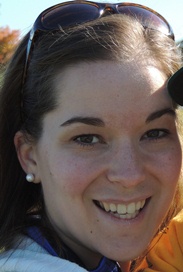 Bethany Bratney (@nhslibrarylady) is a National Board Certified School Librarian at Novi High School and was the recipient of the 2015 Michigan School Librarian of the Year Award. She reviews YA materials for School Library Connection magazine and for the LIBRES review group. She is an active member of the Oakland Schools Library Media Leadership Consortium as well as the Michigan Association of Media in Education. She received her BA in English from Michigan State University and her Masters of Library & Information Science from Wayne State University. Bethany is strangely fond of zombies in almost all forms of media, a fact which tends to surprise the people that know her. She has two children below age five, and is grateful at the end of any day that involves the use of fewer than four baby wipes.
Bethany Bratney (@nhslibrarylady) is a National Board Certified School Librarian at Novi High School and was the recipient of the 2015 Michigan School Librarian of the Year Award. She reviews YA materials for School Library Connection magazine and for the LIBRES review group. She is an active member of the Oakland Schools Library Media Leadership Consortium as well as the Michigan Association of Media in Education. She received her BA in English from Michigan State University and her Masters of Library & Information Science from Wayne State University. Bethany is strangely fond of zombies in almost all forms of media, a fact which tends to surprise the people that know her. She has two children below age five, and is grateful at the end of any day that involves the use of fewer than four baby wipes.

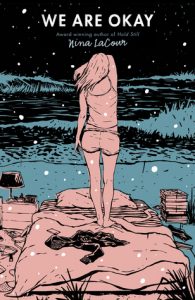


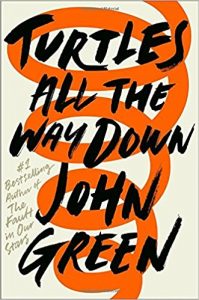 1. Turtles All the Way Down
1. Turtles All the Way Down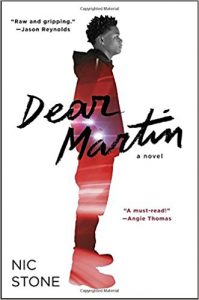 2. Dear
2. Dear 3.
3. 4.
4. 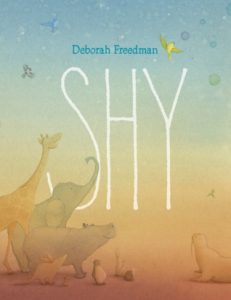 With the holidays coming, teaching curriculum in any cohesive fashion can be challenging–at best.
With the holidays coming, teaching curriculum in any cohesive fashion can be challenging–at best. 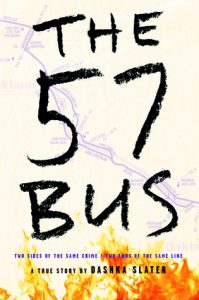 I’m not even finished reading
I’m not even finished reading 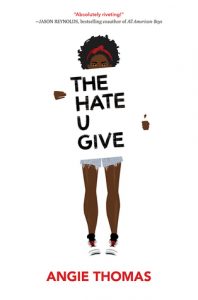 The Hate U Give
The Hate U Give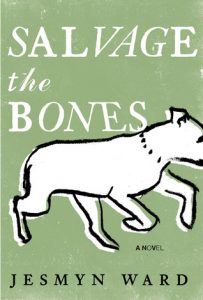 Regulars on this blog are probably betting all the money in their bank accounts that I’m going to suggest a graphic novel (just kidding–what teacher has money saved up in a bank account?!). I’m going to branch out in a new direction, though, and recommend a tough but beautiful read by Jesmyn Ward called
Regulars on this blog are probably betting all the money in their bank accounts that I’m going to suggest a graphic novel (just kidding–what teacher has money saved up in a bank account?!). I’m going to branch out in a new direction, though, and recommend a tough but beautiful read by Jesmyn Ward called 

 The Smartest Kids in the World: And How They Got that Way
The Smartest Kids in the World: And How They Got that Way Make It Stick: The Science of Successful Learning
Make It Stick: The Science of Successful Learning
 The Alchemist
The Alchemist Amy Gurney (
Amy Gurney (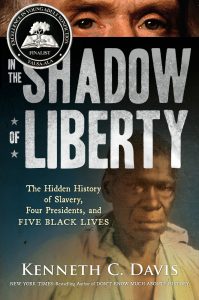 I used to think that nonfiction was not my thing. But I’m a librarian, so I have to make it my thing in order to best serve my students and staff. Still, I often felt like I was twisting my own arm while reading nonfiction.
I used to think that nonfiction was not my thing. But I’m a librarian, so I have to make it my thing in order to best serve my students and staff. Still, I often felt like I was twisting my own arm while reading nonfiction.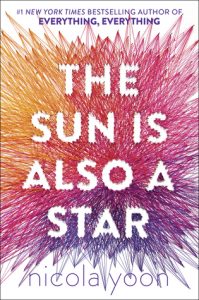
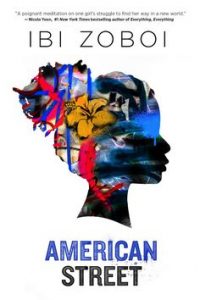 What’s more fun than reading a book set in a place with which you are intimately familiar? To read about restaurants, buildings, and even street names that you know personally is a small thrill.
What’s more fun than reading a book set in a place with which you are intimately familiar? To read about restaurants, buildings, and even street names that you know personally is a small thrill.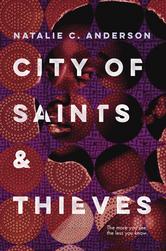 I’ve had frequent conversations about contextual pools lately. I hear more and more of my colleagues speaking about the challenges that arise in teaching their subject matter when the contextual pool of the students is so limited. That is, when our students have very little background knowledge on a subject, it is very difficult for them to learn new material or to garner any interest in doing so.
I’ve had frequent conversations about contextual pools lately. I hear more and more of my colleagues speaking about the challenges that arise in teaching their subject matter when the contextual pool of the students is so limited. That is, when our students have very little background knowledge on a subject, it is very difficult for them to learn new material or to garner any interest in doing so.